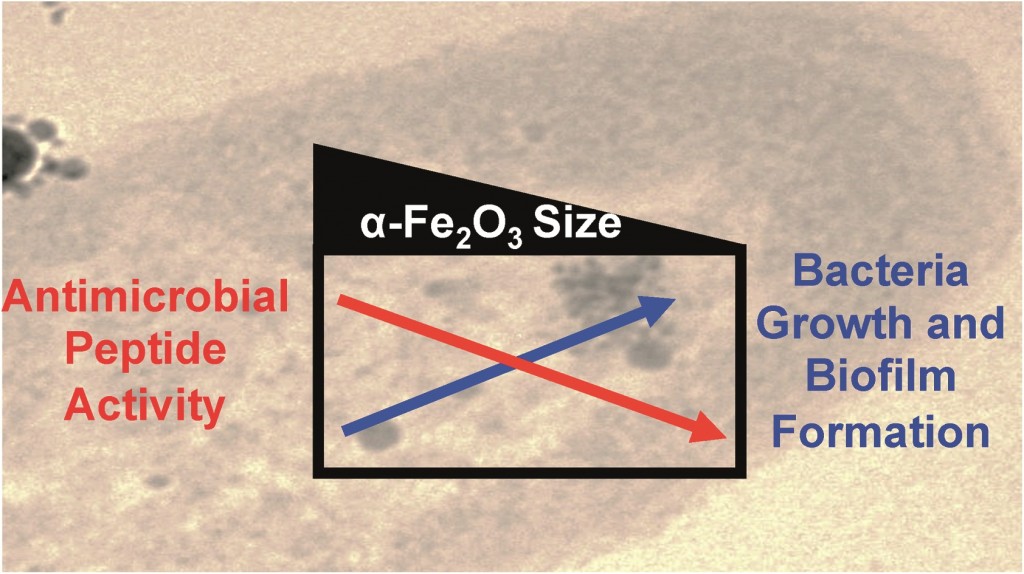Iron-containing nanoparticles are beneficial in a wide range of applications, but little is known about the effects they have on bacterial pathogens. Jennifer Borcherding and colleagues from the University of Iowa, including Vicki Grassian, the Environmental Science: Nano Editorial Board Chair, have completed research to show that iron oxide nanoparticles can induce bacterial growth and biofilm formation as well as inhibit antimicrobial peptide (AMP) function.
Iron-containing nanoparticles are generally thought to be non-toxic; however these studies suggest that the effect of co-exposures of nanoparticles with known pathogens and their impact on host innate immunity should be taken into consideration when screening nanoparticle toxicity. The use of iron-containing nanoparticles in industry is increasing, therefore the potential for iron-containing particle exposure, as particulate matter in air, is also increasing. This is a concern to human health, as particulate matter has been associated with increased respiratory exacerbations, pneumococcal infections, otitis media and eye infections.
Three main experiments were carried out to investigate the effect of iron-containing nanoparticles on bacterial pathogens.
- Pseudomonas aeruginosa (PA01), a known pathogen to humans, animals and plants, was exposed to iron oxide nanoparticles of different size ranges. These results showed that the smallest particles induced the greatest amount of growth.
- Biofilms were grown in the presence of iron oxide particles and aluminium oxide particles of similar sizes. These results showed that biofilm formation was increased more in the presence of iron oxide particles than in the presence of aluminium oxide particles.
- The effects of iron-containing particles on AMP activity was determined by incubating physiologically relevant concentration of AMPs and iron oxide particles, of different sizes, and testing the effects. It was shown that the smaller iron-containing particles provided the greatest amount of bioavailable iron and inhibited AMP activity the most.
This study showed that the smaller the particle, the larger the effect for bacterial growth, biofilm formation and AMP function impairment. This is because the smaller particles have large surface areas and increased dissolution. The research has demonstrated that iron oxide nanoparticles provide a source of bioavailable iron and play an important role in bacterial growth.
Download the full article for free* by clicking the link below:
Jonas Baltrusaitis, Jennifer Borcherding, Haihan Chen, Larissa Stebounova, Chia-Ming Wu, Gayan Rubasinghege, Imali Mudunkotuwa, Juan Carballo, Joseph Zabner, Vicki Grassian and Alejandro Comellas
DOI: 10.1039/C3EN00029J
*Access is free through a registered RSC account – click here to register











